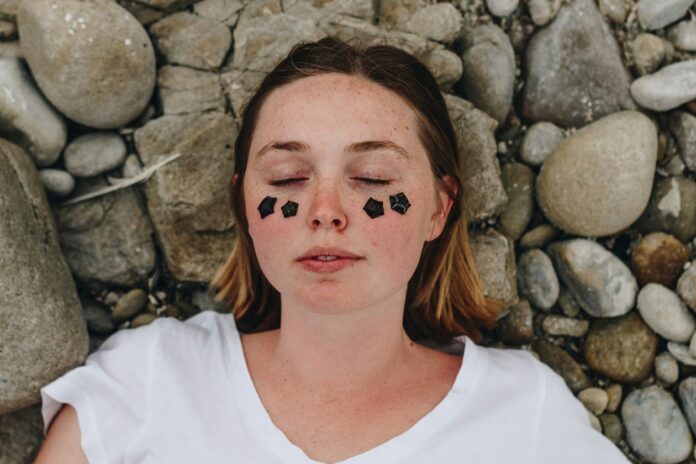Acne scars are one of those things that seem to sneak up on people. Most folks focus so much on getting rid of active breakouts that they don’t think about the long-term damage happening underneath. The reality is that preventing scars is much easier and cheaper than treating them after they’ve formed.
The key insight here is understanding that scarring isn’t just about severe acne. Even moderate breakouts can leave permanent marks if they’re not handled properly. The inflammatory process that creates acne also damages the skin’s structure, and once that damage is done, it becomes a cosmetic issue that can last for decades.
Understanding How Acne Scars Actually Form
When a pimple forms, it’s essentially an infection in your pore. The body’s immune system rushes in to fight this infection, which causes inflammation. This inflammatory response is what creates the redness, swelling, and pain associated with breakouts.
Here’s where things get tricky. As the body fights the infection, it sometimes damages the surrounding tissue. If the inflammation goes deep enough or lasts long enough, it can destroy collagen fibers that give skin its smooth texture. When these fibers don’t regenerate properly, they leave behind depressions, raised areas, or discolored patches.
The type of scar that forms depends on how much collagen is lost or damaged. Ice pick scars happen when deep, narrow infections destroy small columns of tissue. Rolling scars occur when broader areas of collagen are damaged, creating wave-like depressions. Boxcar scars form when chunks of tissue are lost, leaving behind square or rectangular depressions.
What catches many people off guard is that the healing process itself can create scars. When the body produces too much collagen while trying to repair damage, it can create raised keloid or hypertrophic scars that sit above the skin’s surface.
The Critical Window for Prevention
Most people don’t realize there’s actually a window of opportunity where scar formation can be prevented or minimized. This window exists from the moment a breakout begins until several weeks after it heals.
During active inflammation, the goal is to reduce the intensity and duration of the inflammatory response. The longer and more intense the inflammation, the more likely it is to cause permanent damage. This is why early intervention makes such a big difference in preventing scars.
Once a breakout starts healing, the skin enters a remodeling phase that can last several months. During this time, the body is rebuilding damaged tissue and laying down new collagen. Proper care during this phase can influence whether the final result is smooth skin or permanent scarring.
The problem is that this remodeling phase isn’t obvious to most people. A pimple might look healed on the surface, but the deeper tissue repair process continues for months. What happens during this period can determine long-term outcomes.
Early Intervention Strategies That Work
The most effective scar prevention happens during active breakouts, not after they heal. This means resisting the urge to pick, squeeze, or otherwise manipulate active pimples. Any additional trauma during the inflammatory phase increases the risk of permanent damage.
Professional extraction, when done properly, can actually reduce scarring risk compared to leaving cysts and deep pimples to resolve on their own. Dermatologists have tools and techniques that can drain infections without causing additional tissue damage.
For persistent or severe breakouts, early professional intervention becomes crucial. Options like laser treatment in the UK can address active acne before it has a chance to cause permanent damage, working on both the infection and inflammation that lead to scarring.
Topical treatments during the healing phase also play a role in scar prevention. Retinoids can help normalize skin cell turnover and promote proper collagen formation. Vitamin C serums support healthy collagen synthesis, while niacinamide can reduce inflammation that might otherwise lead to permanent damage.
Recognizing High-Risk Situations
Some types of acne are much more likely to cause scarring than others. Deep cystic acne, the kind that forms painful lumps under the skin, almost always leaves some degree of permanent damage if left untreated. These deep infections create so much inflammation that surrounding tissue damage is nearly inevitable.
Acne that keeps recurring in the same spots is also high-risk for scarring. Each time tissue in the same area becomes inflamed, it adds to the cumulative damage. This is why addressing underlying causes of acne becomes important for scar prevention, not just treating individual breakouts.
Picking and squeezing dramatically increases scarring risk, but most people don’t realize how much additional damage they’re causing. The mechanical trauma of extraction attempts pushes infected material deeper into tissue and creates additional inflammatory damage around the original pimple.
Certain skin types are also more prone to scarring. People with darker skin tones are more likely to develop post-inflammatory hyperpigmentation, while those with lighter skin might be more prone to atrophic (depressed) scars.
When Professional Help Becomes Essential
The decision to seek professional treatment shouldn’t wait until acne becomes severe. For scar prevention purposes, professional intervention is most valuable during the active phase of moderate to severe acne, before permanent damage accumulates.
Dermatologists can prescribe treatments that work faster and more effectively than over-the-counter options. Prescription retinoids, oral antibiotics, and hormonal treatments can reduce both the severity and duration of breakouts, minimizing the window for scar formation.
Professional procedures during active acne can also prevent scarring. Steroid injections can quickly reduce inflammation in large cysts, preventing the prolonged inflammatory response that leads to tissue damage. Professional chemical peels can help prevent the buildup of dead skin cells that contributes to recurring breakouts in the same areas.
For hormonal acne that cycles monthly, early professional intervention can break the pattern before cumulative damage accumulates. Many women find that addressing hormonal triggers prevents not just current breakouts but also the repeat inflammation that leads to scarring.
The Economics of Prevention vs Treatment
Here’s something most people don’t consider: preventing acne scars is almost always less expensive than treating them after they form. Scar treatment often requires multiple sessions of laser therapy, chemical peels, or microneedling, with costs that can reach thousands of pounds.
Early professional acne treatment, while not cheap, typically involves fewer sessions and less aggressive procedures. The cost of preventing scars through proper acne management is usually a fraction of what scar treatment costs later.
There’s also the time factor to consider. Acne scar treatments can take months or years to show full results, while scar prevention happens in real-time during acne treatment. The earlier intervention happens, the less extensive treatment needs to be.
Long-term Skin Health Considerations
Preventing acne scars isn’t just about cosmetics, though that’s certainly part of it. Scarred skin has different properties than healthy skin. It may be more sensitive to sun damage, slower to heal from other injuries, and more prone to developing additional skin issues over time.
The psychological impact of acne scarring also tends to be more persistent than the impact of active acne. While breakouts come and go, scars are a constant reminder that can affect self-confidence for decades. Prevention addresses not just the physical damage but also the long-term emotional impact.
Proper scar prevention also sets up better skin health patterns for the future. People who learn to address acne properly early on tend to have better overall skin care habits and are more likely to catch other skin issues before they become serious problems.
The bottom line on acne scar prevention is that timing matters more than most people realize. The decisions made during active breakouts determine whether skin heals smoothly or develops permanent damage. Early, appropriate intervention can make the difference between clear skin and a lifetime of dealing with scars.






